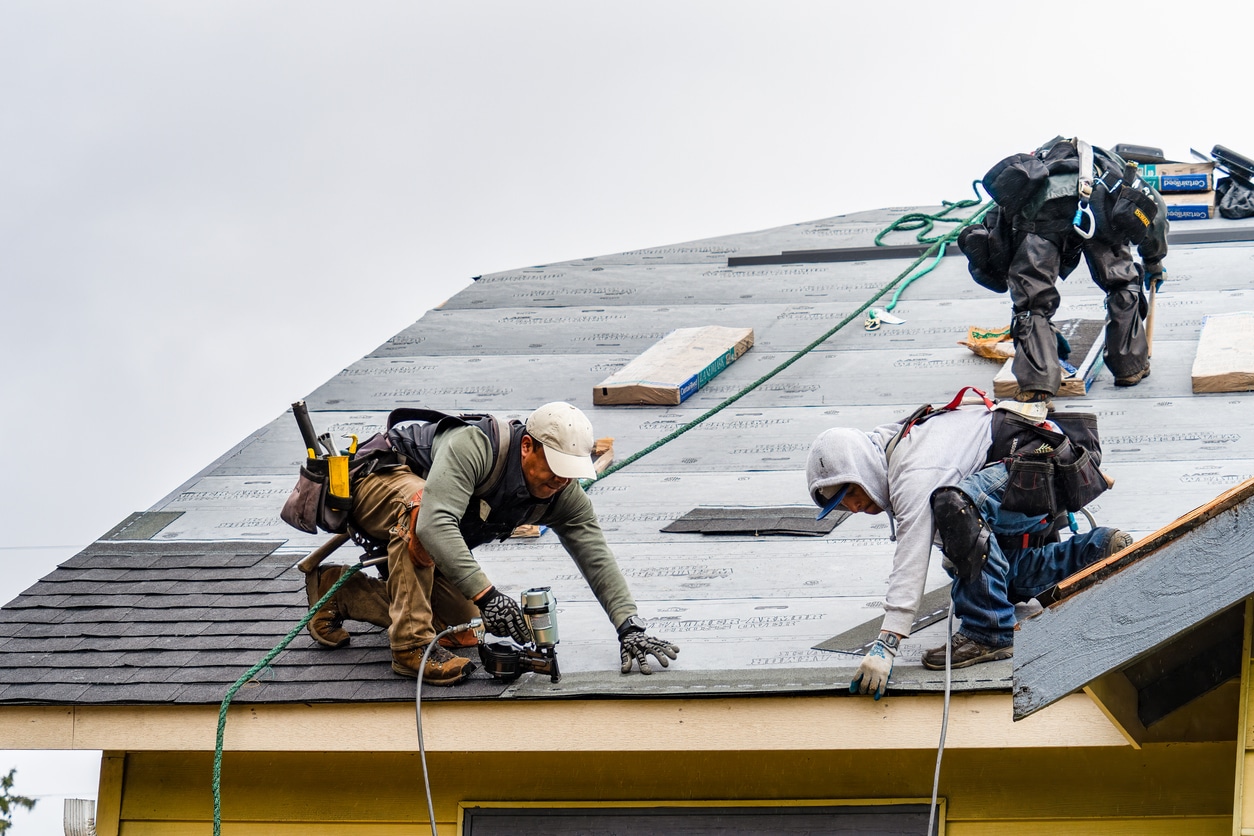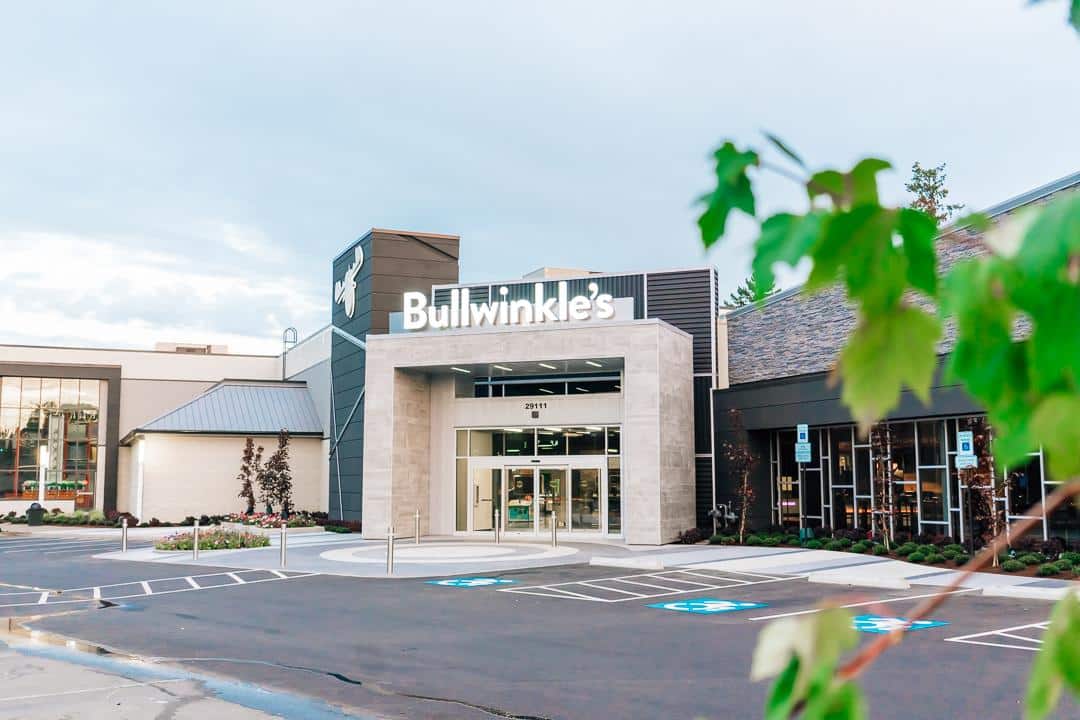Top 5 New Roof Types to Install in the Pacific Northwest

When your roof is doing its job, it’s easy to take it for granted. But if it gets damaged during a storm or degrades due to age, you’re faced with the expense of repairing or replacing it. It can be hard to where to begin. Should you go with the materials that were used before, or should you consider another type of roof? New roofs are common upgrades for those wanting to sell because it adds value to the home. A fresh roof with clean lines and gutters can dramatically increase curb appeal from something worn down or potentially scary looking to a homebuyer. Also, most lenders will require that the roof is not leaking and in reasonable shape before funding the homebuyer’s loan.
In this article, we’re covering the top five Pacific Northwest roof types, along with the costs, pros, and cons of each. The numbers provided are per “square,” or 100 square feet. Keep in mind that materials can make up about 40% of your roofing cost.
1. Asphalt Shingle Roofs in the Pacific Northwest
Asphalt (aka three-tab) is the most common type of roofing you’ll see around Portland. This type of roofing is the base-line, standard most everyone is familiar with and is very effective in many scenarios and settings.
Asphalt Roofing Cost
The cost for asphalt shingles can range from $6,000 to $20,000 (depending on size) when professionally installed. If you want to take care of the job yourself, the cost lowers significantly to around $2,000 to $4,000 as more than half the cost of a new roof is labor (which is why it is especially important to get multiple bids).
Asphalt Roof Pros
- Least expensive type of roofing
- Easy to install
- More recyclable now than in the past
- Effective in standing up to the elements
- Comes in a variety of colors and styles
- Individual shingles can be replaced
Asphalt Roof Cons
- High winds can cause damage
- Can mildew easily (especially in the PNW climate)
- Not the most energy-efficient
- Not the most durable
- Some still made from petroleum products
- Shorter life span of 15-30 years
2. Metal Roofs in the Pacific Northwest
Love the sound of rain pattering overhead? A metal roof might be for you. While this roofing material might be a bit of an investment, there are plenty of reasons to consider it. The most common metal roofing material found in Portland are made of zinc-coated steel. Metal is a common choice in the PNW where there is heavy snowfall or tall trees hang over the top of the roof.
Metal Roofing Cost
Metal is a high-end option and will run you anywhere from $9,000 to $50,000 depending on the size of the roof and type of metal used—aluminum, zinc, steel, or copper. Copper roofing is extremely expensive.
Metal Roof Pros
- Durable, resistant to climate conditions
- Durable option for huge PNW trees that hang over the roof, dropping heavy limbs and debris
- Metal roofs often last 40 to 70 years.
- Stylish, many attractive options are available
- Copper is extremely long-lasting and and has a low melting temperature
- Zinc is extremely long-lasting and resistant to corrosion
- Aluminum is long-lasting and resistant to corrosion
- Steel comes in galvanized, weathering, and galvalume
- More environmentally friendly than asphalt
- Energy efficient
Metal Roof Cons
- Can be more expensive than other types of roofing
- Copper can develop a patina
- Can dent easily, leading to leaks
- Can be too noisy for some
3. Tile Roofs in the Pacific Northwest: Clay, Concrete, or Slate
Tile roofs can make a statement, aesthetically, and can come in clay, concrete, and slate. These tiles come curved, flat, fluted, or interlocking. In Portland, you’ll see mostly concrete tile roofs with clay here and there. Slate is the least common because of its cost.
Clay, Concrete, or Slate Tile Cost
A tile roof will cost you somewhere in the range of $25,000 to $50,000 or more depending on the size of the roof and material.
Clay, Concrete, or Slate Tile Pros
- Long life expectancy, often 50 to 100 years or more
- Natural, earthy appearance
- Resistant to fire, water, mold, and fungus
- Environmentally friendly
Clay, Concrete, or Slate Tile Cons
- Heavy! Roof tiles can crack homes and foundations (I’ve seen it)
- More expensive, materials and installation, maintenance and repair
- Many have poor installation (be sure to hire a professional)
- Can easily break (HVAC and other workers can break tiles while walking on roof)
- Tiles come in lots, hard to match later if a few get broken
5. Cedar Shake Shingle Roofs in the Pacific Northwest
Beautiful and earthy, wood shake shingles are made from cedar and add a pleasing aesthetic to your home’s curb appeal. But can also have a notable downside.
Cedar Roof Cost
A cedar roof will cost you somewhere between $25,000 and $50,000 depending on the roof’s size.
Cedar Roof Pros
- Beautiful, natural appearance
- Easier to install yourself than some other materials
- Long life span, 30 to 50 years or more
- Energy-efficient
- Environmentally friendly
Cedar Roof Cons
- Costly to install and maintain
- High-maintenance required to prevent leaks and damage
- Deteriorate quickly
- Require additional insect- and mold-resistant treatments
- Prone to fire
Other Factors that Figure Into Roofing Costs
Roofing materials have their own market value that rises and falls over time. Labor costs can rise in the spring and summer months when roofing companies are booked out in advance, but installing a new roof in the fall or winter rainy season is often impossible or at least risky. Lean on professional advice and direction, and always obtain multiple bids before choosing a roofing contractor.
Thinking of Replacing Your Roof Before Selling a Home?
It can be a big help to talk with an experienced, licensed real estate agent to get advice about how much value a new roof will add to your home, and whether it is necessary or not to replace a roof prior to going on the real estate market. Give us a call today at 503-714-1111 or chat with the bot on our site. Our top 1% seller’s agents look forward to talking with you!


